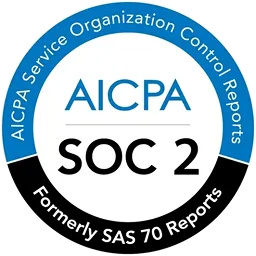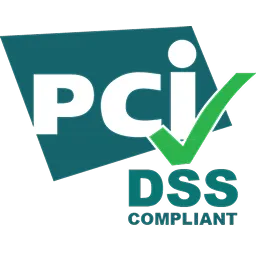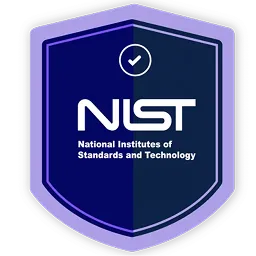We are pretty sure that the price hike announced by Microsoft in August 2021 wouldn't have faded from your mind yet. At least not for us! Microsoft is like that oldest tradition that businesses never want to give up—but its recent price hike came as a shocker to almost everyone.
With SaaS adoption becoming the trend, employees no longer think twice while signing up for software applications. And many times, this leads to SaaS wastage. Most probably, that's what is happening with your Microsoft 365 licenses too.
Microsoft Office has everything you need from Docs for creating documents, Excel for your reports, PowerPoint to make presentations, Teams for your virtual meetings, and much more. With its wide array of features, there are high chances that teams or departments in your organization are using standalone apps for many of these tasks causing you to pay more, for instance, Slack instead of Teams.
As told in their official press release, the primary reason quoted behind the price hike of M365 licenses is the value delivered to the customers in the last ten years. The below listed is the new pricing, which could go as high as 25%.
- Microsoft 365 Business Basic plan, which was $5/user/month, has been hiked to $6/month/user.
- Microsoft 365 Business Premium, which was earlier priced at $20/user/month, will become $22/user/month.
- Office 365 E1 plan for enterprise, which was priced at $8/month/user, is now $10
- Office 365 E3 plan for enterprise, which was priced at $20/month/user, is now $23
- Microsoft 365 E3 plan for enterprise, which was priced at $32/month/per user, is now $36
- Office 365 E5 plan for enterprise, which was priced at $35/month/user, is now $38
The good news is that there is a way to avoid paying more for the SaaS licenses and apps you are using. Even while paying the new prices for Microsoft 365 licenses, you can—in effect—pay the same or less total amount as you are now by optimizing the app licenses.
There are high chances that your current SaaS stack is unoptimized. Unhealthy SaaS management practices cause inefficiencies in the form of redundant apps and unused licenses that leave you vulnerable not to pay more than required but cause compliance and security risks too. In the absence of data on these redundant apps and licenses, IT teams keep wondering what they can do.
Worry not! We have got you covered. With the help of SaaS management platforms like Zluri, IT teams are overcoming their SaaS challenges via SaaS cost optimization, improving security and compliance, and automating IT tasks.
As the new prices for Microsoft 365 will come into effect from March 2022, you still have a couple of months left to audit your SaaS licenses, including Microsoft 365, and optimize them and fight against the menace of SaaS overspending.
We at, Zluri, have developed the DUAAS framework to help companies prevent SaaS wastage, optimize their existing SaaS expenses and save big on their overall budget. DUAAS stands for Duplicate apps, Unused licenses, Autorenewal of subscriptions, Abandoned apps, and Suitable licenses.
Use the DUAAS Framework to Optimize Your Microsoft 365 Licenses SaaS Licenses
With the DUAAS framework, we have saved many businesses up to 50% of their SaaS cost. Let's now see how it works in practice.
1. Eliminating the Duplicate Apps

As signing up for SaaS apps takes a few minutes, employees and departments tend to purchase applications independently. The worst is when the buying is done while an application already exists with the same use case or functionality. It leads to app duplication, and you end up paying for similar applications that perform the same function.
Consider these examples:
- If you have signed up for any of Microsoft's enterprise plans (E1, E3, E5), all of them come with the communication, meeting, and collaboration platform, \"Teams.\" But when some employees and departments have also purchased another communication tool like \"Slack,\" it causes app duplication.
- These plans come with a dedicated storage space through OneDrive for sharing and storing files in the cloud. E1 boasts a 1 TB storage space, and E3 & E5 has 1 TB, which can be expanded until 25 TB, if required. But without utilizing these effectively, if your departments are using other apps like Google Drive or Box, or DropBox, the massive storage space is wasted, and you are paying twice for the same storage function.
- Say you have opted for the highest E5 tier, which comes with Viva Insights and Power BI for data insights and analytics—but your departments depend on tools like Trevor and Google Data studio or for analytics and data visualization, respectively; another clear case of duplication.
With its robust and versatile SaaS discovery engine, Zluri finds applications with overlapping functionality inside your organization. It gives you departments and business unit-level app usage insights to decide which one to keep and which one to discard.
2. Rightsize Unused Licenses

It's common for companies to forecast their demands and purchase licenses in bulk. If the forecasted demand has not been met, they end up paying for unused licenses. And end neglecting that it will take a considerable part of their budget.
Consider this example: Say you are planning to expand your organization with a new branch, and your hiring process is in the swing. You have only 1000 employees on board but have signed up for 1500 Office 365 E5 licenses. In this case, the excess of 500 licenses from the highest tire is blatantly wasted if you haven't attained the numbers yet.
You may say it's just $35/month/user but comes to $2,10,000/year for 500 users, which is exorbitant. So, you need to right-size the number of licenses, or else you are wasting huge sums of money for nothing.
Zluri finds out the number of licenses that are left unused and unattended. So you can easily discard those and purchase new licenses when there is a need.
3. Being Proactive With Automatic Renewals

Most IT contracts have an auto-renewal clause. After giving off your credit card information, the vendor will renew the application automatically, depending on the SaaS agreements. Or, a bigger problem is when employees sign up for a free trial on the corporate card and forget to cancel the license once it's over.
Consider this example: Your marketing department wants to analyze the website visitors' data for making improvements to the website. Note this is a short-term project, let say, for two months. To avail analytics tool Power BI pro from Microsoft, they have upgraded their E3 plans to E5 (the difference is $15/license/month).
Since all the plans from Microsoft come with auto-renewals, you need to be vigilant and terminate the plan once the task is completed, or else you end up paying for the highest tier without using most of its features.
Zluri's calendar helps you organize and plan for your renewals and alerts you way prior to the renewal date—so that you have enough time to decide whether to renew or discard the application based on your need.
4. Terminate the Abandoned Licenses
While most businesses have some processes in place for SaaS buying, there is no governance around its usage and termination after buying these apps. This means the software apps are never terminated properly, exposing your organization to compliance and security risks.
Suppose your organization doesn't have a stipulated framework for procurements—or deprovisioning uses from SaaS applications when offboarding employees. In such cases, a huge number of abandoned licenses get accumulated in the organization's SaaS stack until a data breach brings the issue to notice.
When an employee leaves your organization, Zluri helps you verify that all their SaaS accounts have been closed and terminated. This will not only help you secure your data but save money wasted on unused licenses too.
Zluri tracks the software usage and finds out the licenses that have been abandoned or unused. Also, you can de-provision the application for offboarding employees directly from Zluri's dashboard.
5. Downgrading the Licenses To Suitable Tier
Another common practice in organizations is overestimating their needs and purchasing the topmost tier SaaS vendors offer. In this case, when all the features getting used are available in a lower-tier plan, it is a mere waste of money.
Consider this example: Say you have purchased E3 licenses having both desktop and cloud versions, but the employee using it works remotely. You can downgrade it to E1, which provides all the required office applications in the cloud. This way, you save nearly $13 (based on new pricing) per user per month.
Zluri points out the least used applications that help you understand the apps usage pattern at department, business unit, teams, etc. level, and sign up for a plan that suits them.
Use An SMP While You Still Have Time
By using a SaaS management platform like Zluri, you can recover from the repercussions that are about to be caused by the price hike announced by Microsoft. At the same time, with the detailed stats about all the applications and vendors, you can make your organization secure and compliant while automating many of the tasks, making it a triple treat for IT teams.
Microsoft is just one example today. We believe this represents a general trend towards value-based pricing. As more SaaS vendors adopt this pricing model, customers without a means to measure their SaaS usage will suffer. These kinds of sudden price hikes will impact your overall budget as we advance.
As your reliance on SaaS grows, you will get locked and may have to succumb to the demands of SaaS providers. So, better to take control of your SaaS stack and be in control.









.svg)














